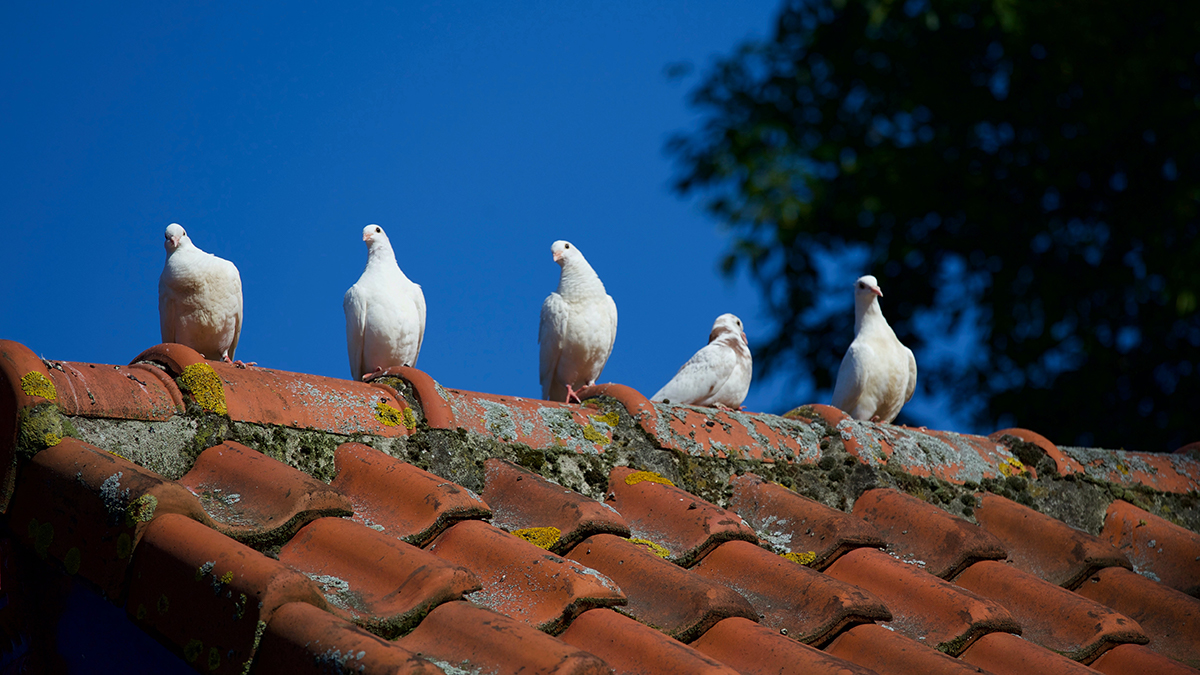By: Madison Grimm
Springtime often means increased pressure from pest birds. The best defense is prevention, through consistent maintenance of your facility. Birds are in search of food, shelter and a place to breed, and if your business provides even one of those three things, they may stick around and cause problems for your operations.
It is primarily important to understand what these birds are in search of. Grains, seeds, tree and plant buds, flowers and fruits make up the diets of two common pest bird species – pigeons and house sparrows. House sparrows use grass, straw, feathers and other debris to build their nests, which they often reuse multiple times. They choose protected areas in, on or near buildings, such as ledges, signs and light fixtures. Pigeons prefer to nest on ledges or cliffs, and use sticks, stems, leaves and other debris for construction.
Here is a breakdown of six common areas to be mindful of and regularly maintain to prevent bird issues.
1. Signage
Signs are a common place for birds to roost, nest or just hang out. This is problematic, as their presence and droppings can create an unsightly appearance for your building. Nesting material also presents a fire hazard if the signs are powered by electricity.
2. Open doors
Open doors provide easy access to the inside of your building. Birds can learn how and when the doors open and plan their entry accordingly. Some even learn to activate automatic doors.
3. Dumpsters
In addition to the food listed above, pigeons will also feed on garbage when other food sources are scarce. While dumpsters are not something you can remove, you can try to reduce the attraction to them. This can be done by regularly emptying and cleaning dumpsters, outdoor garbage cans and surrounding areas, and keeping them covered to discourage access.
4. Parking lots
If you see birds flying in your parking lot, it can be an indication that they are roosting nearby. This means they are staying because they are being provided shelter and food. Strive to make your parking lot and surrounding area a food desert.
5. Roofs
The roof lines of your business are a common roosting place for birds since they provide the best vantage point to search for food below and predators above. Rooftop equipment can also provide safe places to nest – resulting in roof damage from bird droppings and nesting materials that clog drains and vents.
6. Gaps & cracks
Be aware of any structural issues that would allow access to your building’s interior. Birds, like rodents, often don’t require a large opening to gain entry. Additionally, because they can fly and can reach higher places, they have access to a lot more building openings than rodents.
Solutions for bird issues vary by case. Copesan will collaborate with you to find the right combination of prevention, exclusion and removal that works for your need. We encourage you to explore the free resources below to learn more about bird control and to contact us for help in managing bird pressures at your business.
Other Bird-Related Resources
Watch our 5 Ways to Make Your Business Less Attractive to Birds video:
Visit our bird solutions webpage.
Download our Banning Birds from Your Business infographic.
Watch our Birds playlist on YouTube.

